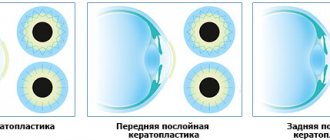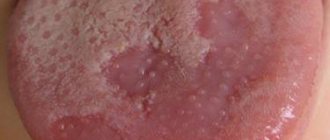Navigation:
- What to look for during a self-examination
- Choosing a specialist depending on symptoms
Today, a problem such as pathology of the oral mucosa is often diagnosed.
The disease can affect the lips, tongue, and cheeks. What to do? You need to go to the doctor! The dentist will provide assistance to the patient. If the disease is associated with therapeutic problems, you should visit a therapist. If necessary, narrow specialists will be invited for consultation. Note! For any abnormalities of the oral cavity and its organs, you should consult a doctor promptly. Ignoring the disease can lead to serious complications. The sooner the patient gets to the doctor, the faster and easier the therapy will be.
Many ailments of the chewing organs and oral cavity can be treated by a dentist. The tongue is a mirror of the body. His condition allows us to judge:
- About the work of the heart;
- Spleen and liver;
- Kidney, when the pathology is detected from the side;
- Stomach or pancreas;
- Teeth, gums;
Based on the nature of the patient’s complaints, plaque, color, smell, and tests, the doctor determines the problems that have arisen. It is important not to delay going to the medical center. When the disease concerns the chewing organs or mucous tissues of the mouth, you need to consult a dentist. Dentistry in St. Petersburg is a department where they will provide professional assistance to any patient. Diseases are often caused by bacterial, viral, fungal infections, and improper functioning of internal organs.
- Go to the dentist if the burning sensation bothers you, the problem is related to the gum tissues, teeth. Inflammation can be caused by a denture, periodontal disease, or an unsuccessful filling.
- Visit an ENT specialist to rule out tonsillitis and tonsillitis.
- For no apparent reason, make an appointment with a therapist. The doctor will determine the provoking factor and refer you to the right specialist.
This could be an endocrinologist, a neurologist, an infectious disease specialist and other doctors.
Treatment of diseases of the oral mucosa
To prescribe treatment, you must first establish the cause of the symptoms, as well as determine the degree of development of the disease.
Dentists can identify diseases in the first stages, which are asymptomatic. That is why it is very important to regularly visit a dentist so that if pathology develops, the cause can be eliminated without the development of complications.
Professional teeth cleaning is also important, because... this will keep your mouth healthy.
Sign up for a consultation with our highly qualified specialists from the Avalon clinic by phone number: +7 (931) 322-0-955. Clinic administrators will be happy to make an appointment, and dentists will answer all questions. Waiting for you!
Periodontist - what does he treat?
The author of the article is a dentist-periodontist, candidate of medical sciences, Tokmakova I.A.
Oral health is of great importance for the proper functioning of the human body as a whole. It is no secret that when certain functions are lost, the normal functioning of all internal organs and systems is disrupted. Therefore, every person should monitor the health of their teeth and oral mucosa, and not only for aesthetic reasons. If any problems arise, a periodontist will come to the rescue. Who is this?... I am sure that this is the first time many people have heard this definition.
Let's take a closer look at who a periodontist is, what his duties include, and when the time comes to contact him.
A periodontist is a highly qualified specialist who is involved in the diagnosis, treatment, and prevention of periodontal diseases. The periodontium is a complex of tissues that surround the tooth and provide its fixation in the jaw bones. The condition of the oral cavity and the patient’s body as a whole depends on the professionalism of such doctors.
You should contact a periodontist if you are concerned about:
- bleeding gums during hygiene procedures, meals, or even without contact with anything hard;
- purulent discharge from under the gingival margin;
- pain in the gum area during chewing;
- swelling and discoloration of the gums;
- bad breath;
- mobility of teeth and changes in their position;
- exposure of the necks of the teeth and increased sensitivity;
- formation of tartar and plaque.
When visiting a periodontist, the patient does not always know what exactly the doctor will do and how to carry out the treatment.
At the initial appointment, the doctor asks about complaints and examines the patient. The doctor is interested in occupational hazards, nutritional patterns, and bad habits. Identifies past and systemic diseases. Conducts an external examination of the maxillofacial area and oral cavity, palpation of the lymph nodes. Determines periodontal status: the presence of periodontal pockets and their depth, tooth mobility. Determines the index of the level of oral hygiene, the amount of supra- and subgingival dental plaque. Dental photography and x-ray examination are carried out, which are mandatory to make a full, detailed diagnosis of a patient with periodontal disease. The periodontist may also prescribe blood tests.
Mandatory measures include consultation with dentists of related specialties in order to determine the quality of previously performed therapeutic, orthopedic and orthodontic treatment, and bite pathology.
Based on the results of the examination, the periodontist makes a detailed diagnosis, on the basis of which a comprehensive treatment plan for the patient will be drawn up. The volume of manipulations and timing of treatment depend on the severity and extent of the disease. The principles of treatment of periodontal diseases are complexity, individuality, consistency, systematicity, as well as balance.
Upon completion of the main course of treatment, the patient must come for periodic examinations once every 3 or 6 months, or according to an individual schedule. To maintain a sustainable treatment result, regular patient visits to a periodontist are a must.
The periodontist is not scary! There is no need to be afraid of it if you want to maintain healthy teeth for life. A dentist - periodontist - is an irreplaceable doctor, he does good deeds.
Healthy teeth and gums are a very important part of our charm. They provide quality of life and self-confidence. They enable us to fully enjoy our meals and speak clearly, and enable us to face everyday and unusual situations with interest and pleasure. Simply put, intact, beautiful teeth and healthy gums are additional self-confidence, an indicator of culture and upbringing.
This is exactly how we want to see our patients!
How professional teeth cleaning is performed at the dentist.
Stage 1 – removing hard plaque from teeth (tartar).
The first step is to remove tartar. Sometimes, some patients do not require this procedure. Due to high-quality personal hygiene, good genetics and regular hygiene from a specialist, the soft plaque does not have time to transform into hard plaque.
Tartar removal is performed with a special ultrasonic device called a scaler (or scaler). The tip of the scaler operates under the influence of high-frequency oscillatory movements with ultrasound frequency (25-50 kHz). During the “breaking” of hard plaque, the movements of the tip of the nozzle are accompanied by the automatic supply of water to it. The entire procedure involves the mandatory use of a saliva ejector, which collects the resulting water with elements from cleansing.
Advantages of ultrasonic cleaning.
- Efficiency and versatility. This method removes plaque and plaque from the teeth that has pigmented the teeth. The device has not one nozzle, but several, which allows you to effectively cope with hard plaque of different levels of formation.
- Ultrasound has a bactericidal effect.
- Affordable price and comfort.
- The impact of ultrasound on dental plaque, as a rule, does not cause pain to the patient. There are exceptions when the painful effect is due to increased sensitivity at the necks of the teeth, or the hard plaque is very massive and requires longer and more thorough treatment. In this case, it is possible to use anesthesia.
When there are hard deposits, they constantly put pressure on the gums. It is not noticeable to the ordinary eye, but the mucous membrane is swollen in contact with plaque. During and after ultrasonic cleaning, slight bleeding of the gums is possible (especially when removing massive formations). The mucous membrane quickly returns to normal. If necessary, the doctor will give recommendations on the use of a special gel to quickly normalize the gums.
Disadvantages of ultrasonic cleaning.
- There are significant differences in the ultrasonic cleaning devices themselves. Modern nozzles meet all safe requirements for this type of procedure. They have linear movements that provide a gentle effect on the enamel without damaging it.
However, outdated and cheap devices are still used and more often than we would like, which are found not only in budget dentistry, but also in private ones. These are scalers that are sonic and magnetostrictive. They also operate on the principle of producing ultrasonic vibration waves, but the tip of the nozzle has a completely different shape - elliptical or circular.
Modern piezoelectric scalers move linearly. With an elliptical (or circular) shape, the movements of the tip injure tooth enamel because these impacts hit the tooth.
- Doctor's incompetence.
Removing hard plaque is not a difficult procedure for a doctor. But deposits occur not only above the gum, but also under the gum. Supragingival formations are well visualized, but not every doctor can detect subgingival formations. Finding and eliminating such formations is a lengthy process and sometimes takes more than one visit. Therefore, to carry out high-quality hygiene, it is better to contact professionals - a hygienist or periodontist.
Stage 2 – removal of soft plaque and pigmentation.
Soft plaque is eliminated using a unique development from the Swiss company EMS - AirFlow. The method involves supplying three components under high pressure: a special gentle abrasive composition, water and oxygen. This method eliminates pigmented and bacterial plaque, is able to remove small hard deposits, and partially polishes the enamel surface.
Pros of AirFlow cleaning.
- The enamel is cleaned efficiently, while being absolutely safe. The process does not injure tooth enamel in any way. Pigmented and bacterial plaque is removed even in the spaces between teeth.
- A whitening effect is achieved. After the procedure, the enamel becomes significantly lighter and the teeth look whiter than before the plaque was removed.
- The enamel becomes smooth. Freshness in the mouth after this procedure.
Disadvantages of AirFlow cleaning and contraindications.
- The presence of diseases such as asthmatic bronchitis and bronchial asthma are a contraindication to AirFlow. There is a risk of bronchospasm.
- The method cannot remove voluminous hard dental deposits; it is only suitable for removing soft, pigmented plaque and very minor tartar.
- If there is an inflammatory process of the gums in the active stage, then this procedure cannot be carried out; you must first stop the inflammatory process and wait for it to subside.
Stage 3 – teeth polishing.
Not all dentists pay due attention to this procedure. However, after hygienic cleaning, the stage of polishing tooth enamel is a necessary procedure. Using a special rotating brush attachment with polishing paste applied to it, the final and important stage of teeth treatment occurs.
With high-quality polishing of the tooth surface, ideal smoothness of the enamel is achieved, which guarantees a long-term hygiene effect. On an absolutely smooth surface, plaque does not appear for a long time and the teeth remain clean much longer than without the use of this manipulation.
Our patients often note that after professional cleaning by our specialists, their teeth remained smooth for a very long time and plaque did not form on the teeth for up to several months.
Stage 4 – fluoridation.
Not all patients need this manipulation when performing comprehensive hygiene. The need for fluoridation of teeth is determined by a specialist, depending on the condition of the enamel and the need for its additional strengthening with fluoride.
It can be done in the form of putting a mouthguard on the dentition, which is filled with a special fluoride-containing composition, or the composition is applied directly to the surface of each tooth with a special brush (deep fluoridation).
Factors that further contribute to the formation of plaque:
- Poor hygiene. Incorrect mechanical movements of the toothbrush on the surface of the teeth, irregular teeth cleaning, lack of additional dental care products, incorrectly selected toothbrush and toothpaste.
- The presence of only soft foods in the diet. Solid foods help remove plaque.
- Chewing food on one side only. The absence of a tooth(s) often transfers the chewing process to only one side (where the teeth are). In this case, on the side that is not involved in chewing, plaque forms much faster and develops into tartar.
- Crowded teeth, malocclusion. These factors make it very difficult to access all areas of the teeth for cleaning.
- Impaired metabolism.
- Heredity.
- Periodontitis.










